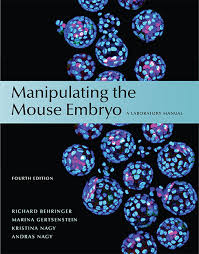ANAT2341 Lab 4: Difference between revisions
No edit summary |
|||
| Line 1: | Line 1: | ||
== 1. QUIZ == | == 1. QUIZ == | ||
==2. Guest Lecturer - | == 2. Guest Lecturer - Dr Fabien Delerue == | ||
{| | {| | ||
| width=185px|[[File:Fabien deleRue profile photo.jpg|180px]] | |||
| | Dr Fabien Delerue | ||
| '''Manipulating the mouse embryo: from ES Cells to genome editing''' | |||
<br> | |||
Dr Delerue is currently in the Transgenic Animal Unit (TAU) his career spans over twenty years practice in animal handling, surgery, and generation of animal models of diseases. His research focuses on the production and characterization of new transgenic mouse models of human genetic disorders, using cutting-edge genome engineering techniques such as CRISPR/Cas9. | |||
Links: [https://research.unsw.edu.au/people/dr-fabien-delerue UNSW Research Gateway] | |||
| | |} | ||
[[ | '''Lecture slides:''' [[File:Delerue.pdf]] | ||
===References=== | |||
Delerue F & Ittner LM. Genome Editing in Mice Using CRISPR/Cas9: Achievements and Prospects | |||
Cloning and Transgenesis 2015, 4:135 doi:10.4172/2168-9849.1000135 [http://www.omicsgroup.org/journals/genome-editing-in-mice-using-crisprcas9-achievements-and-prospects-2168-9849-1000135.php?aid=50992] | |||
:"Animal models are a powerful tool to understand the mechanisms underlying physiological and pathological processes in vivo. To date, mice remain the species most commonly used for genetic manipulation. The recent development of engineered endonucleases such as Zinc Finger Nucleases (ZFN), Transcription activator-like effector nucleases (TALEN), and the Clustered Regularly Interspaced Short Palindromic Repeats (CRISPR/Cas9) offered easy, flexible, and fast alternative to ES-Cell based gene targeting. Thanks to multiple advantages, the CRISPR system superseded its predecessors and became a popular method for genome editing. Here, we review the latest techniques to apply CRISPR editing to the mouse genome, and emphasize on the current methods used in transgenic laboratories and subsequent achievements in mice." | |||
Ke YD, van Hummel A, Stevens CH, Gladbach A, Ippati S, Bi M, Lee WS, Krüger S, van der Hoven J, Volkerling A, Bongers A, Halliday G, Haass NK, Kiernan M, Delerue F, Ittner LM.
Short-term suppression of A315T mutant human TDP-43 expression improves functional deficits in a novel inducible transgenic mouse model of FTLD-TDP and ALS. Acta Neuropathologica 2015 Nov;130(5):661-78 PubMed 26437864 [https://dx.doi.org/10.1007/s00401-015-1486-0] | |||
Ittner A, Chua SW, Bertz J, Volkerling A, van der Hoven J, Gladbach A, Przybyla M, Bi M, van Hummel A, Stevens CH, Ippati S, Suh LS, Macmillan A, Sutherland G, Kril JJ, Silva APG, Mackay J, Poljak A, Delerue F, Ke YD, Ittner LM. Site-specific phosphorylation of tau inhibits amyloid-β toxicity in Alzheimer’s mice | |||
Science 2016 Nov;354 (6314):904-908 doi: 10.1126/science.aah6205 [http://science.sciencemag.org/content/354/6314/904.full] | |||
===Recommended Literature=== | |||
{| | |||
| [[File:Manipulating_the_Mouse_Embryo.jpg|200px]] | |||
| | [[File:Reproductive Engineering Techniques.jpg|200px]] | |||
|- | |- | ||
| [http://cshlpress.com/default.tpl?cart=147944968860031853&action=full&--eqskudatarq=982 Manipulating the Mouse Embryo: A Laboratory Manual (Fourth Edition)] By Richard Behringer, Marina Gertsenstein, Kristina Vintersten Nagy, & Andras Nagy. | |||
| [http://card.medic.kumamoto-u.ac.jp/card/english/sigen/manual/onlinemanual.html Reproductive Engineering techniques in mice: Technical manual] Prof Naomi Nakagata, Center for Animal Resources and Development, Kumamoto University, Japan | |||
|} | |} | ||
=== | ===External Links=== | ||
{{ | {{External Links}} | ||
* NCBI Search - [http://www.ncbi.nlm.nih.gov/gquery/?term=CrispR NCBI databases - CRISPR] | [http://www.ncbi.nlm.nih.gov/pubmed/?term=CrispR PubMed CRISPR] | [http://www.ncbi.nlm.nih.gov/pmc/?term=CrispR PubMed Centrap CRISPR] | |||
* JoVE - [https://www.jove.com/video/55765/generation-genetically-modified-mice-through-microinjection] | |||
: | <html5media height="460" width="640">https://www.youtube.com/watch?v=16g6fEup2pQ</html5media> | ||
<br> | |||
==3. Student Group Projects== | |||
I have now added (I hope) a discussion Forum for your group to Moodle available to only your group members. | |||
{{ | <br> | ||
{{ANAT2341ProjectGroup2017table}} | |||
<br> | |||
{{Editing Links}} | |||
<br> | <br> | ||
{{2017ANAT2341 footer}} | {{2017ANAT2341 footer}} | ||
Revision as of 13:17, 19 July 2018
1. QUIZ
2. Guest Lecturer - Dr Fabien Delerue

Dr Fabien Delerue |
Manipulating the mouse embryo: from ES Cells to genome editing
Links: UNSW Research Gateway |
Lecture slides: File:Delerue.pdf
References
Delerue F & Ittner LM. Genome Editing in Mice Using CRISPR/Cas9: Achievements and Prospects Cloning and Transgenesis 2015, 4:135 doi:10.4172/2168-9849.1000135 [1]
- "Animal models are a powerful tool to understand the mechanisms underlying physiological and pathological processes in vivo. To date, mice remain the species most commonly used for genetic manipulation. The recent development of engineered endonucleases such as Zinc Finger Nucleases (ZFN), Transcription activator-like effector nucleases (TALEN), and the Clustered Regularly Interspaced Short Palindromic Repeats (CRISPR/Cas9) offered easy, flexible, and fast alternative to ES-Cell based gene targeting. Thanks to multiple advantages, the CRISPR system superseded its predecessors and became a popular method for genome editing. Here, we review the latest techniques to apply CRISPR editing to the mouse genome, and emphasize on the current methods used in transgenic laboratories and subsequent achievements in mice."
Ke YD, van Hummel A, Stevens CH, Gladbach A, Ippati S, Bi M, Lee WS, Krüger S, van der Hoven J, Volkerling A, Bongers A, Halliday G, Haass NK, Kiernan M, Delerue F, Ittner LM. Short-term suppression of A315T mutant human TDP-43 expression improves functional deficits in a novel inducible transgenic mouse model of FTLD-TDP and ALS. Acta Neuropathologica 2015 Nov;130(5):661-78 PubMed 26437864 [2]
Ittner A, Chua SW, Bertz J, Volkerling A, van der Hoven J, Gladbach A, Przybyla M, Bi M, van Hummel A, Stevens CH, Ippati S, Suh LS, Macmillan A, Sutherland G, Kril JJ, Silva APG, Mackay J, Poljak A, Delerue F, Ke YD, Ittner LM. Site-specific phosphorylation of tau inhibits amyloid-β toxicity in Alzheimer’s mice Science 2016 Nov;354 (6314):904-908 doi: 10.1126/science.aah6205 [3]
Recommended Literature

|

|
| Manipulating the Mouse Embryo: A Laboratory Manual (Fourth Edition) By Richard Behringer, Marina Gertsenstein, Kristina Vintersten Nagy, & Andras Nagy. | Reproductive Engineering techniques in mice: Technical manual Prof Naomi Nakagata, Center for Animal Resources and Development, Kumamoto University, Japan |
External Links
External Links Notice - The dynamic nature of the internet may mean that some of these listed links may no longer function. If the link no longer works search the web with the link text or name. Links to any external commercial sites are provided for information purposes only and should never be considered an endorsement. UNSW Embryology is provided as an educational resource with no clinical information or commercial affiliation.
- NCBI Search - NCBI databases - CRISPR | PubMed CRISPR | PubMed Centrap CRISPR
- JoVE - [4]
<html5media height="460" width="640">https://www.youtube.com/watch?v=16g6fEup2pQ</html5media>
3. Student Group Projects
I have now added (I hope) a discussion Forum for your group to Moodle available to only your group members.
| 2017 Project Groups | |||||
|---|---|---|---|---|---|
| Group 1 | Group 2 | Group 3 | Group 4 | Group 5 | Group 6 |
| Mark Hill - Lab 1 page | |||||